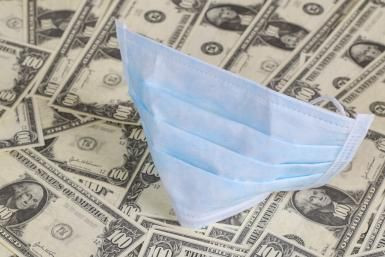How To Fill Out The New PPP Loan Forgiveness Applications

The new Paycheck Protection Program forgiveness applications are here.
Late on Tuesday, June 16, the SBA released an updated PPP Loan Forgiveness Application (Form 3508), which revises the application to reflect PPP changes since the form's original release on May 20. The SBA also released a new, abridged Form 3508EZ for those meeting certain specified requirements. Let's take a look at some of the changes in the Form 3508 and then explore what the requirements are for filing the Form 3508EZ.
Form 3508: The Updated Loan Forgiveness Application
- The default Covered Period for PPP loans is 24 weeks unless you elect to use the shorter eight-week period (for pre-June 5, 2020 loans). Loans made June 5, 2020 and following must follow the 24-week forgiveness window. In either case, you may still elect to use an Alternative Payroll Covered Period beginning the first day of your first pay period following your PPP Loan Disbursement Date for biweekly or more frequent payroll cycles. The election is made when filling out the Application.
- As we've previously outlined, payments to employees cannot exceed $46,154 and payments to owners, partners, and sole proprietors cannot exceed $20,833. You can check here for additional information and calculations.
- Health insurance benefits paid on behalf of S corporation owners, Partners, and Schedule C filers cannot be added to the loan forgiveness calculation, since those amounts are already considered a part of gross wages. Health insurance benefits for all employees remain fully includable and should be accounted for separately from cash compensation for employees. As you will note below in #8, there is a question as to whether C corporation owners can include their health insurance as benefits for the forgiveness calculation. We will keep you posted as this question gets clarified.
- Contributions to retirement plans of Partners and Schedule C filers are excluded from the forgiveness calculation. Contributions to the retirement plans of S corporation owners have not been explicitly precluded like those of Partners and Schedule C filers, so at this time it appears that these contributions can be included separate from payroll costs in the forgiveness calculation. Additionally, retirement contributions to employees are fully includable in the forgiveness calculation and should be accounted for separately from the cash compensation calculation.
- There is an extended safe harbor window for borrowers who reduced employee salaries or full-time equivalency (FTE). Borrowers have until the earlier of December 31, 2020 or when they file the forgiveness application to eliminate any reductions and avoid a decrease in their loan forgiveness amount. This is good news, as you won't have to wait until December 31, 2020 to complete your application.
- An FTE reduction exception has been added. If you made a good-faith, written offer to rehire an individual who was an employee on February 15, 2020 and the individual refuses to return and you are unable to hire similarly qualified employees for unfilled positions on or before December 31, 2020, you will not be required to reduce your FTE calculation.
- An FTE reduction safe harbor has also been included with the revised instructions. No FTE reduction is necessary if you are able to document that your business was unable to operate at the same level of activity between February 15, 2020 and the end of your Covered Period as before February 15, 2020 due to CDC, HHS, or OSHA health, sanitation, and safety standards established between March 1, 2020 and December 31, 2020.
- For the first time in any guidance we've received to date, the revised instructions correlate an S corporation shareholder with the newly coined term "owner-employee". It does this while highlighting that health insurance premiums must be included in S corporation shareholder wages and thus cannot be included separately in the forgiveness calculations. Unfortunately, shareholders of C corporations are not mentioned specifically, so we await further guidance on whether they correlate with the "owner-employees" as well.
Form 3508EZ: The New Fast-Track Forgiveness Application
This streamlined application reaches the same goal of obtaining loan forgiveness but with fewer steps. Businesses that fall into one of the following categories are eligible to use the shortened loan forgiveness application:
- Self-employed individuals with no employees
- Businesses that did not reduce the salaries or wages of their employees by more than 25% and did not reduce the number of hours of their employees
- Businesses that experienced reductions in business activity as a result of health directives related to COVID-19 and did not reduce the salaries or wages of their employees by more than 25%
As with the longer version, the EZ application allows borrowers to use the eight-week or 24-week covered period for computing payroll forgiveness. You will also need to make the same representations and certifications that the loan was justified and used appropriately. The remaining instructions for completion remain essentially unchanged.
Peter N. Riefstahl is a supervisor at Louis T. Roth & Co., PLLC, a Louisville, KY-based Certified Public Accounting firm that specializes in tax planning, accounting, and business consulting services.
© Copyright IBTimes 2024. All rights reserved.





















